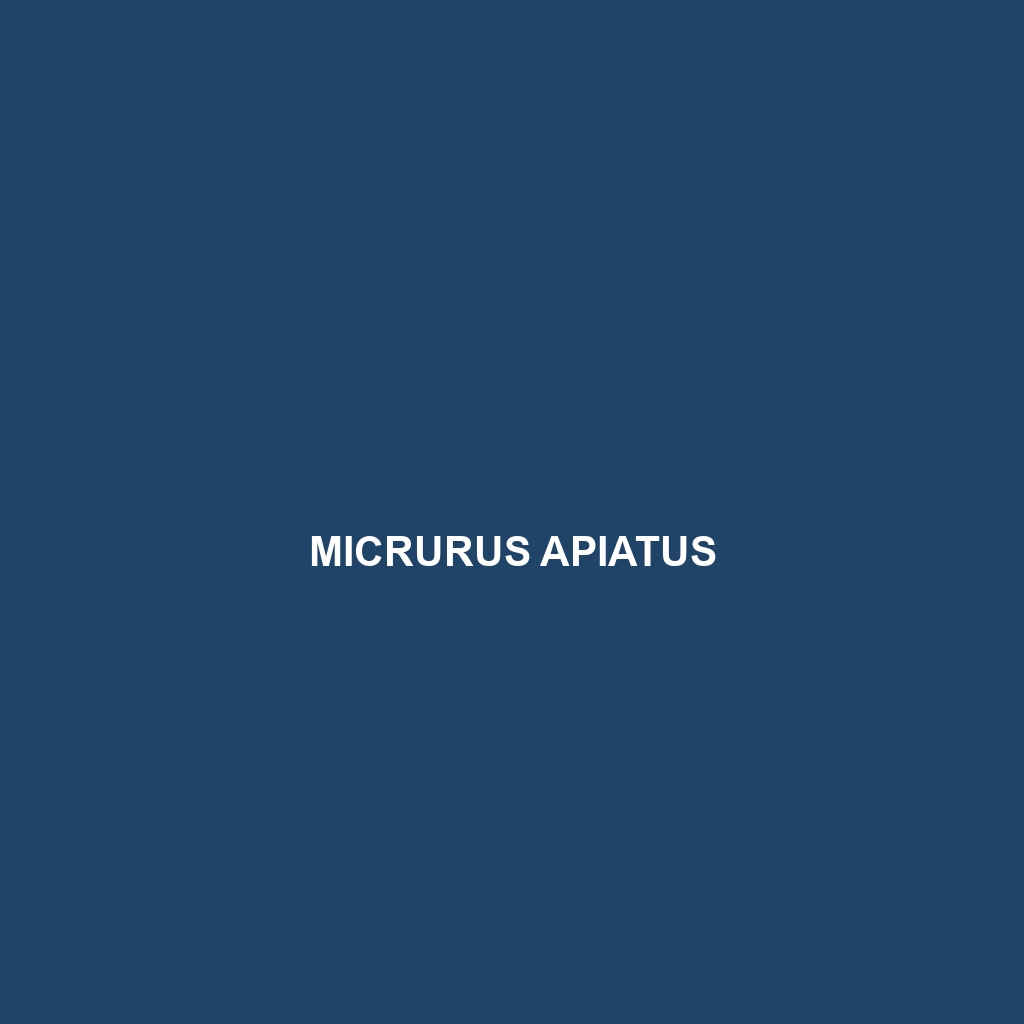Common Name
Micrurus apiatus
Scientific Name
Micrurus apiatus
Habitat
The Micrurus apiatus, also known as the Coral Snake, primarily inhabits tropical and subtropical regions across Central and South America, particularly in countries such as Colombia, Venezuela, and Brazil. This species typically thrives in rainforests, thick brush, and sometimes extends into savannas and even adjacent temperate forests. The humid, warm climate of these regions provides an ideal environment for its survival, as it prefers habitats that offer ample cover and moisture.
Physical Characteristics
The Micrurus apiatus exhibits a striking appearance that makes it easily recognizable. Adults typically measure between 60 to 100 cm (2 to 3.3 feet) in length, with some exceptional individuals reaching up to 1.2 meters (4 feet). Its body is slender and elongated, adorned with vibrant and distinctive coloration. The snake’s scales are generally bright red, black, and yellow in bands, which serve as a warning to potential predators about its venomous nature. The unique arrangement of these colors and the glossy appearance of its scales contribute to the snake’s beauty and its capability to camouflage within its environment.
Behavior
Micrurus apiatus is primarily nocturnal, with most of its activities occurring during the night. This behavior helps it avoid the harsh daytime heat and reduces the risk of predator encounters. During nighttime, it can be seen foraging for food, typically moving slowly and methodically. Socially, these snakes are generally solitary, coming together primarily for mating. Their intricate mating rituals include elaborate courtship displays, where males may engage in combat to establish dominance and access to females. Their behavior is fascinating and includes a phenomenon known as ‘death feigning’; when threatened, these snakes may play dead, which can confuse predators.
Diet
Micrurus apiatus is a carnivore that feeds primarily on small reptiles and amphibians, particularly lizards and frogs. Its diet is supplemented occasionally by small mammals and birds. The snake employs a unique feeding mechanism; it uses its potent neurotoxic venom to immobilize prey quickly, making it easier to consume. The venom, which is delivered through small, fixed fangs, is specialized for rapid intake, confirming the Micrurus apiatus as a dangerous predator within its ecological niche.
Reproduction
The reproductive cycle of Micrurus apiatus includes a fascinating courtship phase typically occurring in the dry season, between May and August. Females give birth to live young, with an average litter size ranging from 5 to 12 offspring. Gestation lasts about three months, and parental care is minimal after birth, although the young snakes are relatively independent shortly after they emerge. This reproductive strategy ensures higher survival rates in the lush, predator-rich environments where they reside.
Conservation Status
Currently, the Micrurus apiatus is classified as Least Concern on the IUCN Red List. However, like many other species, it faces threats primarily from habitat destruction due to deforestation, urbanization, and agricultural expansion, leading to a decline in population. Ongoing conservation efforts focus on habitat preservation, environmental awareness, and the promotion of biodiversity within its native range to mitigate these threats effectively.
Interesting Facts
One of the most captivating aspects of the Micrurus apiatus is its coloration, which serves as a classic example of aposematism—where bright colors indicate danger. Interestingly, there are several species of mimics that try to emulate its coloration to deter predators, despite being non-venomous. Additionally, the venom of Micrurus apiatus is potent enough to affect the nervous systems of animals much larger than itself, further showcasing its adaptation to a predatory lifestyle.
Role in Ecosystem
The Micrurus apiatus plays a crucial role as both a predator and prey within its habitat. By controlling populations of smaller vertebrates, it helps maintain ecological balance. Additionally, because its venomous nature deters many predators, it serves as an integral part of the food web. The species is often considered a keystone predator, as its removal could lead to an overpopulation of its prey species, subsequently disrupting local ecosystems. Protecting the Micrurus apiatus contributes not only to its survival but to the overall health of its environment.
